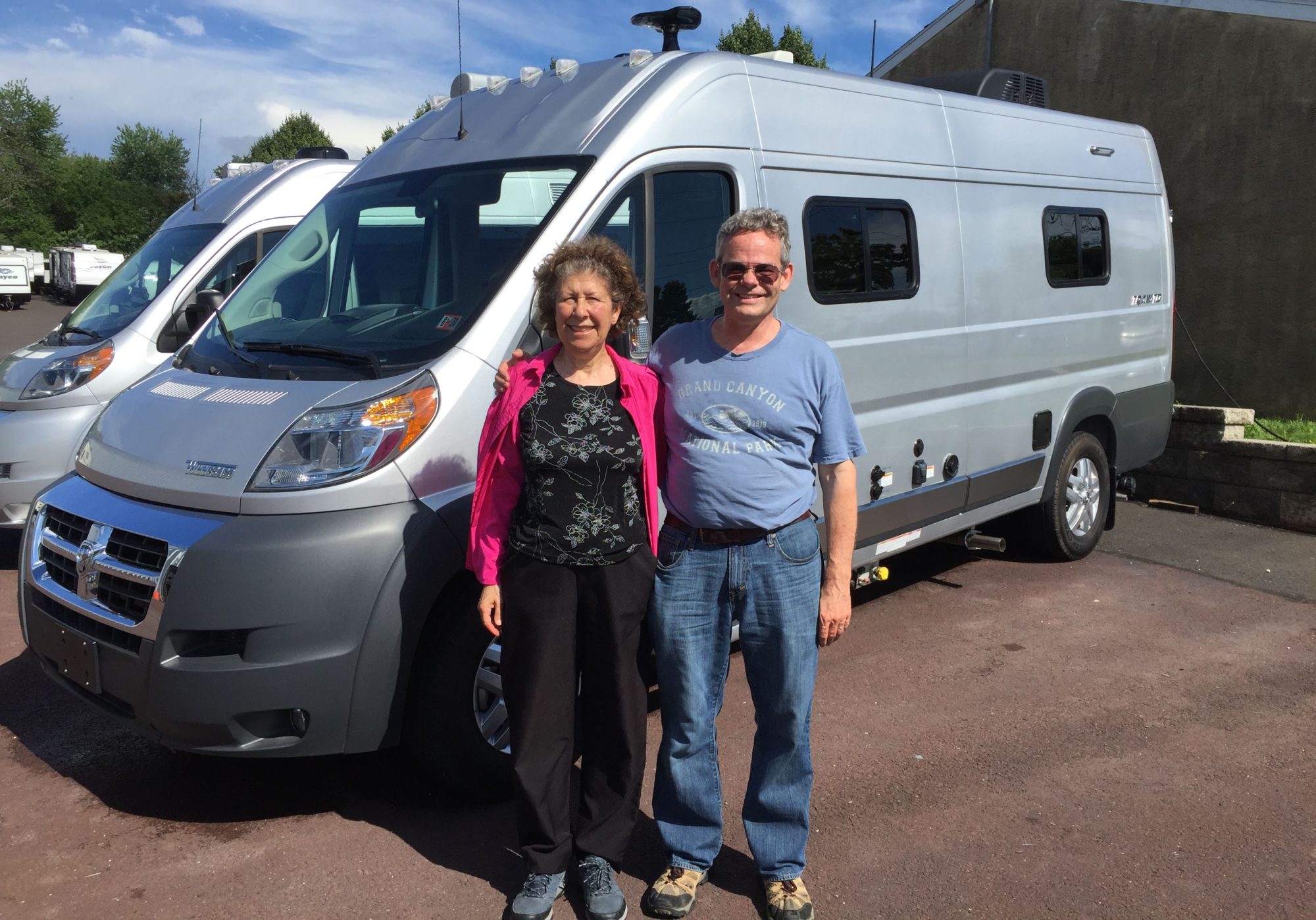March 20 (Corbin KOA): We decided that RV camping is not the way to see the bigger cities, and so we have passed by Knoxville and continued north to Corbin, on the edge of the Daniel Boone National Forest.
Again, this cute KOA has shown the error of my trying to generalize about campgrounds. The campsites are pretty tightly packed, but there is a lot of space between the various camping areas, and there is a real hiking trail to the local lake, Laurel Lake. Right now the part of the park we are in is empty, which adds to our feeling of plenty of space.
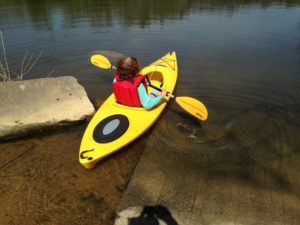 March 21st was a beautiful day. We spent half a day working and then took the hiking trail down to the lake. It was a nice, although short, hike that led to a small dam and then back to the campground by road. After that, we headed out to kayak on the lake – or more properly on the short piece of the Laurel River between the launch ramp and the trail from the campground. (We drove to the launch ramp, as the campground trail is very steep.)
March 21st was a beautiful day. We spent half a day working and then took the hiking trail down to the lake. It was a nice, although short, hike that led to a small dam and then back to the campground by road. After that, we headed out to kayak on the lake – or more properly on the short piece of the Laurel River between the launch ramp and the trail from the campground. (We drove to the launch ramp, as the campground trail is very steep.)
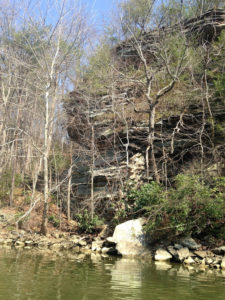
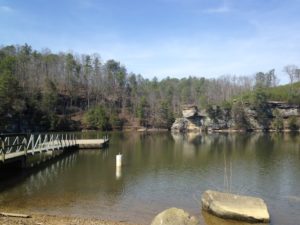
Most of the river shore consists of wooded cliffs about 40 feet high. It is really quite scenic, although it badly (very badly) needs a clean-up. There are a lot of birds and turtles and fish despite the garbage. Our campground hostess tells us that in the other direction the boats go pretty fast, so we were not tempted to continue to the lake.
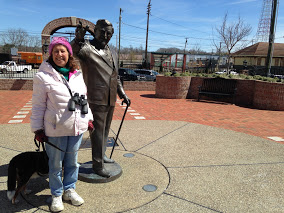 The town of Corbin used to be squarely on the main north-south route of the east. Its main claim to fame these days is that it is the original home of the Harland Sanders Restaurant. Mr. Sanders is better known these days as Colonel Sanders, and it was in Corbin that he developed his famous cooking method and coating. Appropriately we followed a truck loaded with crates of live chickens on our way into town. (It did not look like a comfortable ride for the chickens.)
The town of Corbin used to be squarely on the main north-south route of the east. Its main claim to fame these days is that it is the original home of the Harland Sanders Restaurant. Mr. Sanders is better known these days as Colonel Sanders, and it was in Corbin that he developed his famous cooking method and coating. Appropriately we followed a truck loaded with crates of live chickens on our way into town. (It did not look like a comfortable ride for the chickens.)
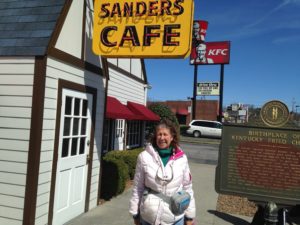 Colonel Sanders settled in Corbin after quite a varied set of careers and purchased a gas station. Since Corbin was a popular stopping place for north eastern US and Canadian tourists en route to Florida, the gas station did well.
Colonel Sanders settled in Corbin after quite a varied set of careers and purchased a gas station. Since Corbin was a popular stopping place for north eastern US and Canadian tourists en route to Florida, the gas station did well.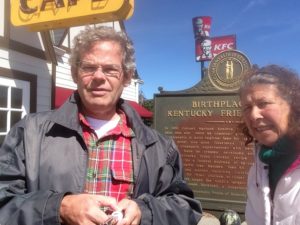 However, when the depression cut into the tourist traffic, Sanders decided to add a restaurant. He primarily made his money from the breakfast menu, but he also perfected a fast way to deep fry chicken under pressure (and hence may have started the fast food industry) as well as experimenting with coatings.
However, when the depression cut into the tourist traffic, Sanders decided to add a restaurant. He primarily made his money from the breakfast menu, but he also perfected a fast way to deep fry chicken under pressure (and hence may have started the fast food industry) as well as experimenting with coatings.
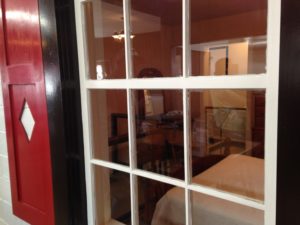 After a fire, he added a motel to the mix. Sanders was something of a marketing genius. He noticed that the women of the family tended to make decisions about where to stop and where to stay.
After a fire, he added a motel to the mix. Sanders was something of a marketing genius. He noticed that the women of the family tended to make decisions about where to stop and where to stay.
He added windows to the restaurant kitchen so that the customers could look in and see how clean it was.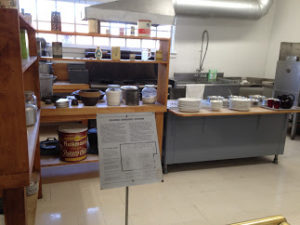 He painted all the surfaces white so that he (and his audience) could readily inspect for cleanliness. And most innovative – he put a full-sized motel room right in the restaurant (above) and positioned the women’s restroom so that the women passed through the room to get to the toilet – thus effectively advertising the rooms and their amenities.
He painted all the surfaces white so that he (and his audience) could readily inspect for cleanliness. And most innovative – he put a full-sized motel room right in the restaurant (above) and positioned the women’s restroom so that the women passed through the room to get to the toilet – thus effectively advertising the rooms and their amenities.
He seems to have done well with all this. He spoke at a number of restaurant conventions and ran unsuccessfully for state office. He began franchising his secret fried chicken recipe in 1952.
However, in 1955, when Sanders was 65 years old, I75 was opened and became the main north-south route, bypassing the town and severely cutting into the local tourist industry. Sanders sold his business with no profit, and faced with living on Social Security and his savings, he took his Kentucky-fried chicken recipe on the road for serious efforts at franchising. By the mid-60s the franchising business was highly successful.
Incidentally, when I went to Wikipedia to fill in the details, the story was a lot more salacious than the sanitized version presented in the Sanders Museum. He was an interesting guy – and apparently not always a nice one!
The original restaurant has been restored serving a modern KFC menu. It has a small but interesting museum which includes the motel room that was in the original restaurant and the original kitchen (with the entire wall cut away) as well as memorabilia. Definitely worth a stop! An international selection of other tourists apparently agreed.
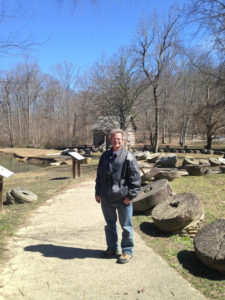 After our KFC lunch, we headed out to a state park for the Mountain Life Museum, which unfortunately was closed. However, nearby is a small historic mill, and a huge outdoor display of old millstones. Of course one sees these millstones all over the US, but it was quite fascinating to learn a bit about the different designs, and how these enormous and heavy chunks of rock were moved around, even from as far as Germany, as only certain types of stone are suitable to making millstones.
After our KFC lunch, we headed out to a state park for the Mountain Life Museum, which unfortunately was closed. However, nearby is a small historic mill, and a huge outdoor display of old millstones. Of course one sees these millstones all over the US, but it was quite fascinating to learn a bit about the different designs, and how these enormous and heavy chunks of rock were moved around, even from as far as Germany, as only certain types of stone are suitable to making millstones.
The millpond and surrounding wetland and forest were swarming with birds, so we wandered around with our binoculars for a couple of hours and tried to identify birds using a birding app (and even sending a photo of two large ducks to Anne for help). We are getting better at this and saw several birds we were not previously familiar with (not counting all the “little grey birds” and “little brown birds” which we undoubtedly have seen before, even if we did not know their names).
It was another cold night. We are beginning to get more savvy and learning to check the forecast if it seems cold. We disconnected the water line, which saved us from dealing with a frozen hose in the morning. This gave me a bit more time during the morning to walk the dog again along the short trail down to the lake .
